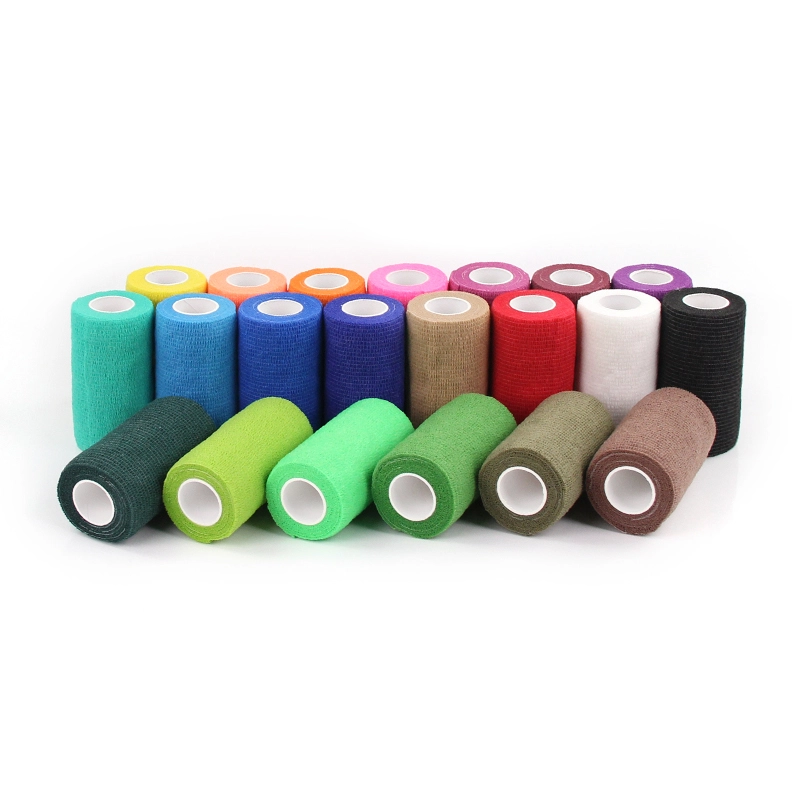The development history of cohesive tapes bandages or self-adhesive tapes
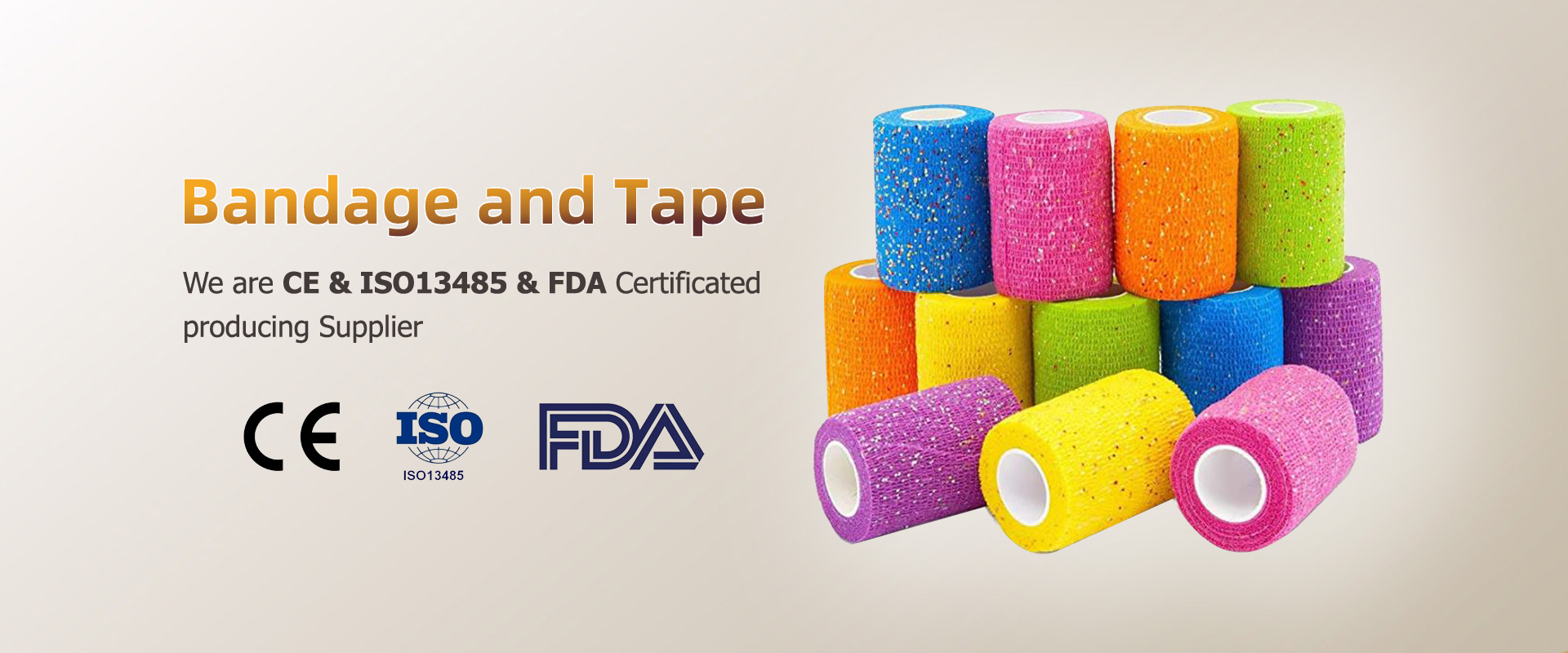
The development history of cohesive tapes has mainly gone through the following stages:
Early exploration stage:
In ancient times, although there were no cohesive bandages in the modern sense, people had begun to use some primitive materials to bandage wounds and fix items. For example, the ancient Egyptians used natural fiber materials such as linen to wrap wounds. These materials were fixed by simple winding and knotting, but lacked stickiness.
Later, people found that some natural sticky substances, such as gum, animal glue, etc., can be used to enhance the adhesion of materials. The use of these natural adhesives laid a certain foundation for the development of cohesive bandages.
Preliminary development stage:
In the 19th century, with the rise of the chemical industry, some early synthetic adhesives began to appear. These adhesives improved the stickiness and stability of bandages to a certain extent. For example, the emergence of rubber adhesives enabled bandages to adhere better to the skin and have a certain elasticity to adapt to the movement of the body.
The cohesive bandages of this period were mainly used in the medical field to help doctors bandage wounds, fix dressings, etc. However, due to technical limitations, the stickiness and comfort of these bandages are not ideal enough, and they may cause irritation to the skin during use.
Rapid development stage:
In the mid-20th century, the rapid development of polymer material science provided new opportunities for the improvement of adhesive bandages. Materials such as polyethylene and polypropylene are widely used in the manufacture of adhesive bandages. These materials have good flexibility, breathability and stickiness, and can better meet the needs of medical and daily life.
At the same time, with the continuous improvement of production technology, the production efficiency and quality of adhesive bandages have also been significantly improved. For example, the use of coating technology can evenly apply the adhesive to the bandage material, which improves the stickiness and stability of the bandage.
Modern application stage:
In recent years, with the continuous advancement of science and technology, adhesive bandages have made new breakthroughs in materials, design and functions. For example, some new types of adhesive bandages use nanotechnology to make the adhesive more sticky and less irritating to the skin.
In addition, the application field of adhesive bandages has also been expanding. In addition to the medical field, it is also widely used in sports, beauty, industry and other fields. For example, in the field of sports, adhesive bandages can be used for muscle protection and injury prevention of athletes; in the field of beauty, adhesive bandages can be used for facial lifting and shaping, etc.

Knee Bandage

Boob Tape

Dexcom Tape
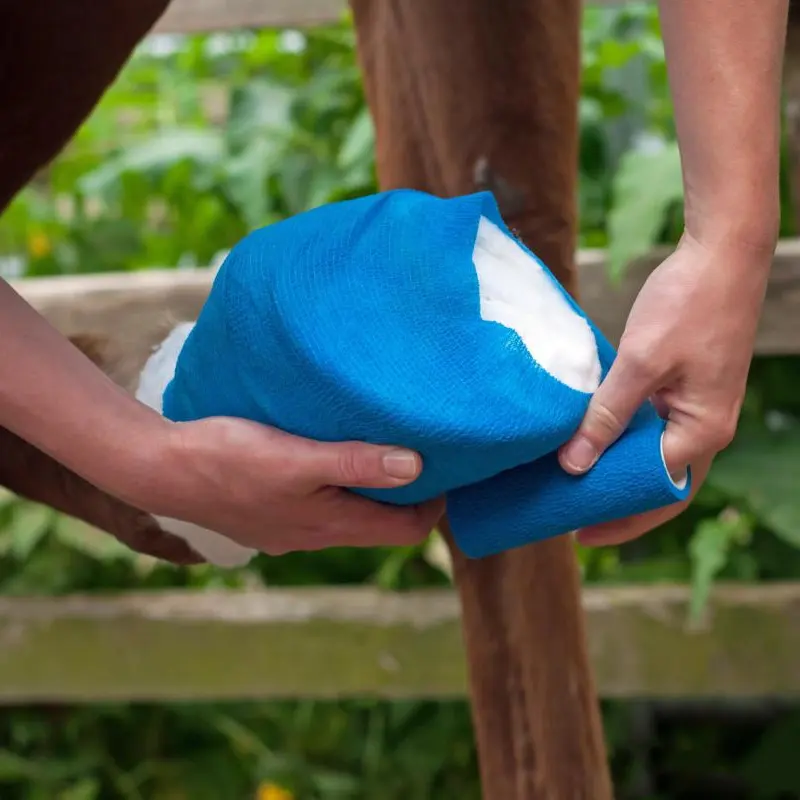
Horse vet wrap
What are the materials used to make tapes and bandages?
The main materials used to make adhesive bandages are as follows:
1. Substrate
(1)Non-woven fabric
Features: soft, breathable, good water absorption, and low irritation to the skin. Non-woven fabrics are composed of directional or random fibers, have good flexibility and strength, and can adapt to the bandaging needs of different parts.
Application: Widely used in various types of adhesive bandages, especially for wound dressing fixation and bandaging of minor trauma.
(2) Cotton material
Features: natural, comfortable, and highly hygroscopic. Cotton bandages are soft and skin-friendly, can provide gentle protection for wounds, and also have good breathability, which helps wound healing.
Application: Commonly used in the medical field, especially for sensitive skin or wounds that need to be bandaged for a long time.
(3) Polyethylene (PE)
Features: Good waterproof, wear resistance and chemical corrosion resistance. PE adhesive bandages can effectively prevent the invasion of moisture and bacteria, and are suitable for some wounds that require waterproof protection.
Application: More commonly used in outdoor sports, water activities and other scenes.
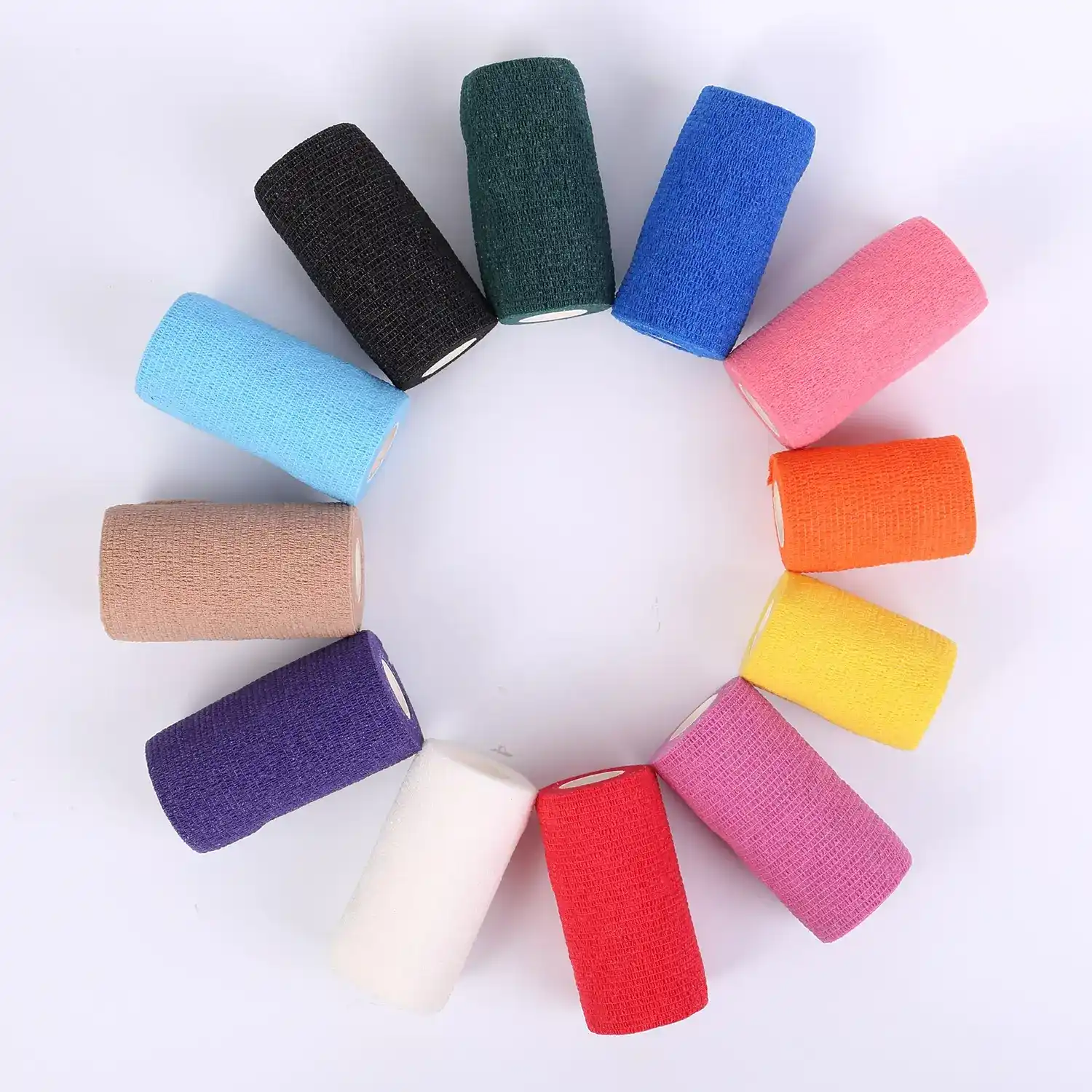
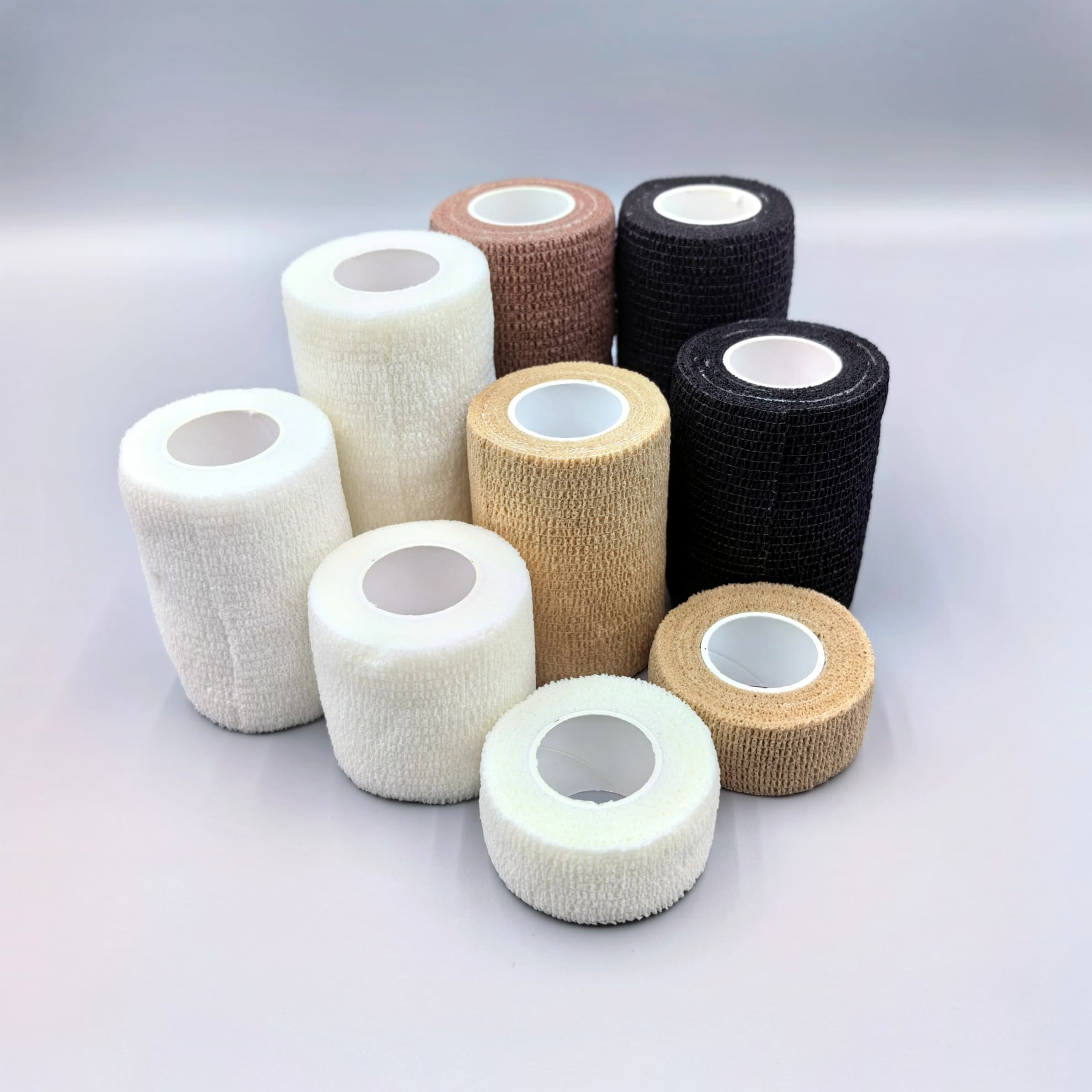

2. Adhesives
(1) Acrylic adhesives
Features: moderate viscosity, good adhesion to the skin, and good biocompatibility. Acrylic adhesives are usually hypoallergenic and not prone to skin allergic reactions.
Application: It is one of the adhesives commonly used in adhesive bandages.
(2) Rubber latex adhesives
Features: strong viscosity, good elasticity and stretchability. Rubber adhesives can adapt to the movement of the body and are not easy to fall off, but may cause allergic reactions to some sensitive skin.
Application: It has certain applications in occasions where strong viscosity is required, such as sports protection, industrial bandaging, etc.
(3) Silicone adhesives
Features: soft, gentle, and minimally irritating to the skin. Silicone adhesives have good air permeability and waterproofness, and can keep the wound dry without affecting the normal breathing of the skin.
Application: Suitable for wound bandaging of infants, the elderly, and people with sensitive skin.
What is the manufacturing process of adhesive bandages?
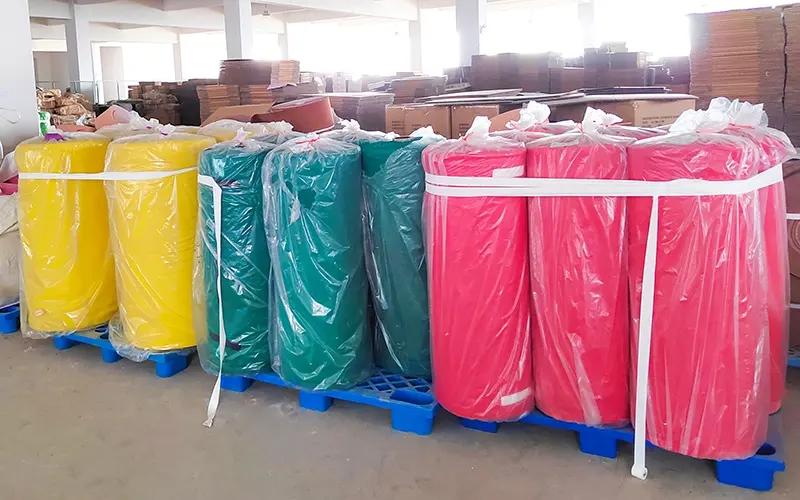
Fabric material for bandage

Coating glue for fabri material

Cutting rolls as required.

Packing bandages and tapes a
The manufacturing process of adhesive bandages varies depending on the material and design. Generally speaking, it includes the following steps:
1. Material preparation: Select a suitable substrate, such as non-woven fabric, cotton material or polyethylene, and prepare an adhesive, such as acrylic, rubber or silicone adhesive.
2. Adhesive coating: Use coating technology to evenly apply the adhesive to the substrate. Continuous coating or intermittent coating can be used to control the thickness and coverage of the adhesive according to product requirements.
3. Drying and curing: The substrate coated with adhesive is dried and cured to ensure the performance and viscosity of the adhesive. The drying and curing conditions can be adjusted according to the type and requirements of the adhesive, such as temperature, time and humidity.
4. Cutting and forming: Cut and form the dried and cured adhesive bandage according to the required size and shape. Cutting equipment such as knives, molds or laser cutters can be used.
5. Packaging and sterilization: The cut and formed adhesive bandages are packaged to keep them clean and sterile. The packaging material can be selected from plastic film, paper bags or other suitable materials. For some adhesive bandages for medical purposes, sterilization treatment may be required, such as radiation sterilization or ethylene oxide sterilization.
It should be noted that the specific manufacturing process may vary depending on different product requirements and production equipment. In actual production, quality control and testing are also required to ensure that the quality and performance of the adhesive bandage meet the relevant standards and requirements.
How to choose a supplier of tapes and bandages?
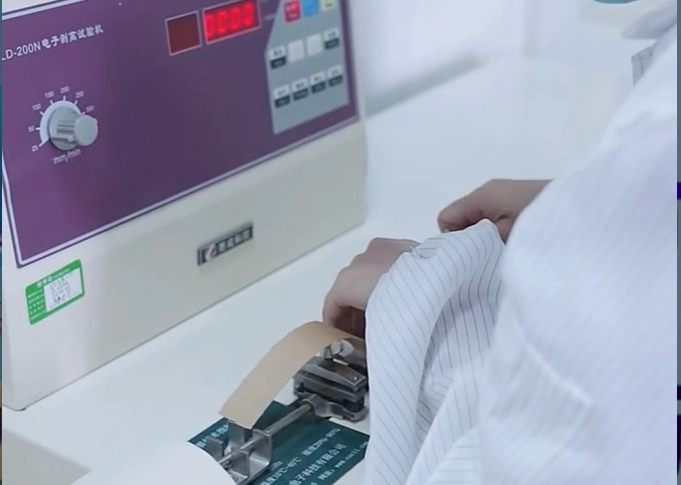
Constant temperature and humidity quality inspection room

Clean and tidy operation workshop for bandages and tapes
When looking for a cohesive tape supplier, you should consider several factors.
First, check the quality of the tape. Look for a supplier that offers high-quality products that are durable and reliable.
Second, consider the price. Compare prices from different suppliers to ensure you are getting a good deal.
Third, check the supplier’s reputation. Look for reviews and testimonials from other customers to ensure the supplier is trustworthy.
Some well-known cohesive tape suppliers include 3M, Johnson & Johnson, and Bysheng. These companies offer a wide range of cohesive tapes in different sizes and strengths to meet the needs of different customers.
In conclusion, when looking for a cohesive tape supplier, consider the quality, price, and reputation of the supplier. Choose a supplier that offers high-quality products at a reasonable price and has a good reputation in the industry.

